China’s Other Looming Choke Point: Food Production
The Yellow River Basin is the center of a contest over water, energy, and agriculture.
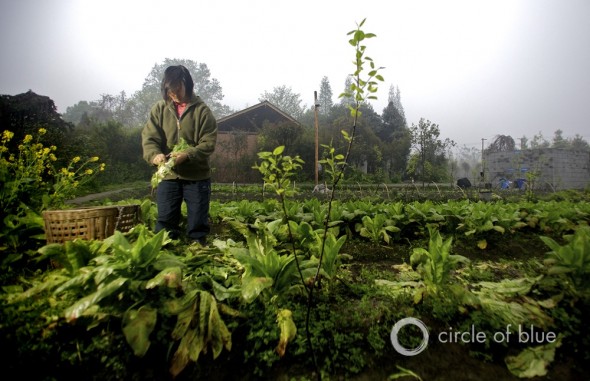
By Keith Schneider
Circle of Blue
YINCHUAN, China—Even along the middle reaches of the Yellow River, which irrigates 402,000 hectares (993,000 acres) of farmland north of the Ningxia Hui Autonomous Region’s provincial capital, there is still no mistaking the smell of dry earth and diesel fuel, the abiding scents of a desert province that is also among China’s most efficient grain producers.
Ningxia farmers have relied on the Yellow River since 221 BCE, when Qin Dynasty engineers clawed narrow trenches from the sand, introducing some of the first instances of irrigated agriculture on earth. Despite persistent droughts, in each of the last five years irrigation has made it possible for annual harvests to increase by an average of 100,000 metric tons.
The 2010 harvest of 3.5 million metric tons was nearly double what it was in 1990. The 3.9 million people who live and work on Ningxia’s 1.2 million farms, most no larger than three-quarters of a hectare (1.6 acres), produce the highest yields of rice and corn in the nine-province Yellow River Basin, according to central government crop statistics.
In sum, the farm productivity of this small northern China region—about the same size as West Virginia and located 1,200 kilometers (745 miles) to the west of the Bohai Sea—reflects the major shifts in geography and cultivation practices over the last generation that have made China both self-sufficient in food production and the largest grain grower in the world.
Yet Chinese farm officials here and academic authorities in Beijing are becoming increasingly concerned that China does not have enough water, good land, and energy to sustain its agricultural prowess. As Circle of Blue and the China Environment Forum have reported in the Choke Point: China series, momentous competing trends—rising energy demand, accelerating modernization, and diminishing freshwater resources—are putting the country’s energy production and security at risk.
The very same trends also threaten China’s farm productivity. Last year, the national farm sector and the coal sector combined used 85 percent of the 599 billion cubic meters (158 trillion gallons) of water used in China.
Food Supply At Risk Along Yangtze and Yellow
This spring, unmistakable evidence of just how vulnerable China’s energy and farm sectors are to moisture shortages has emerged in northern and southern China. Last week, central government and provincial authorities ordered managers at the Three Gorges Dam to release 600 million cubic meters (159 billion gallons) of water to the lower Yangtze River, where authorities began restricting electricity usage by manufacturers. The reason: a severe drought that is dramatically lowering water levels in rivers that generate much of China’s 213 gigawatts of annual hydropower capacity and are used to transport coal to power plants.
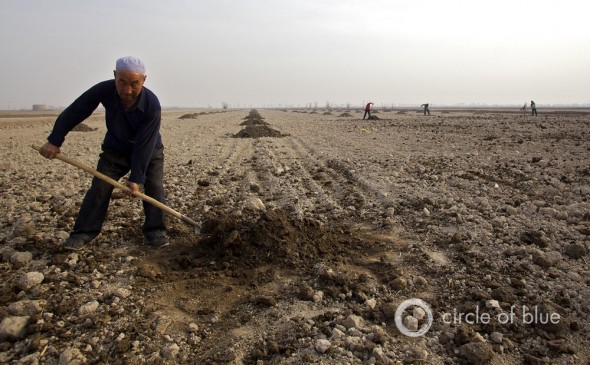
Drought in northern China is also reducing spring wheat harvests and starting to limit coal production, thus accelerating the rising prices for food and energy and putting more inflationary pressure on the entire economy. Grain production on 870,000 hectares (2.15 million acres) of farmland has been affected in Hubei Province—one of China’s largest rice producers—and about 400,000 people have no ready supply of drinking water.
Zheng Shouren, a researcher with the Chinese Academy of Engineering, told the Xinhua News Agency that the emergency water releases from Three Gorges have been a lifesaver. “If there was no Three Gorges Dam, the drought would be worse and shipping on the Yangtze would be very hazardous,” Zheng said.
The Yellow River Basin is another pivotal place where energy, water, and growth trends converge in damaging ways. The nine desert provinces, including Ningxia, now produce more than 20 percent of China’s annual grain harvest, which last year amounted to 546 million metric tons. Four of the Yellow River provinces are also the largest suppliers of coal, China’s primary source of energy.
A 1987 plan to allocate and enforce specific allotments of water to each of the nine provinces in the Yellow River Basin is based on an estimated river volume of 58 billion cubic meters (15 trillion gallons). Of this, Ningxia’s annual allotment for all uses is 4 billion cubic meters (1.1 trillion gallons). The 1987 estimate, however, has proven faulty: last year, the river volume fell to 53 billion cubic meters (14 trillion gallons), and, in 2003, it dropped below 45 billion cubic meters (12 trillion gallons).
Arguably, in fact, in no other region of China is the competition for water between the energy and farm sectors more fierce than along the Yellow River, where available water for agricultural, industrial, and municipal uses—based on the 1987 agreement—amounts to roughly 37 billion cubic meters (9.8 trillion gallons) a year, and where persistent drought caused by climate change is steadily causing water supplies to drop.
The Situation in Ningxia
From 2004 to 2009, according to China’s National Bureau of Statistics, total water reserves in Ningxia alone fell an average of 30 million cubic meters (7.9 billion gallons) a year; 150 million cubic meters (39.6 billion gallons) over five years, or 15.1 percent. Similar declines have occurred in nearby Inner Mongolia and Shanxi.
Of the province’s total water use, the percentage devoted to agriculture is steadily dropping, according to provincial records. Last year, Ningxia’s farms used 3.72 billion cubic meters (983 billion gallons), 6 percent less than the 3.97 billion cubic meters (1.05 trillion gallons) that farmers used in 1988.
North of this provincial capital of 1.5 million, where the Yellow River heads into Inner Mongolia, the contest for water is plainly evident. Dry fields—most around half a hectare (just over one acre)—await planting in wheat, corn, and other crops. In the distance, white smoke pours into the sky from coal-fired power plants, most of which use 75,000 cubic meters (20 million gallons) of water a day.
The sand-bottom irrigation trenches were empty when Circle of Blue and the China Environment Forum visited in April. Gray metal irrigation pipes and sprayers sat idle. Unlike mainstream American agriculture, in which the largest 46,000 farms produce half of the food and cultivate hundreds of hectares each, Chinese agriculture is made up of 200 million farms, each of which oversees an average of a few mu, a Chinese land measurement, or generally about half a hectare, or roughly one acre.
Almost 200 hectares (494 acres) of ground in Ningxia are farmed by 300 families that belong to the Nan Liang Farm Water User Association, a cooperative that also manages an irrigation district that supplies Yellow River water for cultivation.
Kou Guojiang, the 46-year-old chairman of the Nan Liang Water User Association explains that because of competition from Ningxia’s expanding coal sector and industrial base, along with steadily drying conditions, his association’s annual water allotment is 30 percent less than it was in 2008.
Because of the technical assistance provided by the World Bank and other groups, Nan Liang farmers have learned to produce more food with less water. Harvests are steadily increasing, but there is a point, Kuo says, where water scarcity will affect yields.
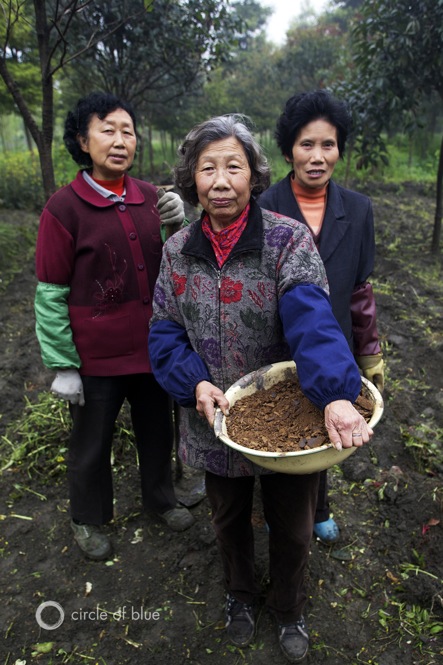
The solution, he says, is to modernize this farm district’s irrigation network, the largest of five in the province, which provides water to 402,000 hectares (993,000 acres) of arable land. The sand-bottom canals waste a lot of water, Kou says. They need to be lined with concrete or plastic. The system also needs to be better managed with up-to-date digital controls and gates so that water is delivered when farmers need it, saving huge amounts of water—not to mention the energy to move it.
North and South
The national coal sector already uses 138 billion cubic meters (36.5 trillion gallons), or 23 percent of the nation’s freshwater reserves. By 2020, according to government estimates, the coal sector will use 188 billion cubic meters (49.7 trillion gallons), making up 28 percent of the nation’s total water use.
Meanwhile, agricultural water use—371 billion cubic meters in 2010, or 62 percent of total use—is expected to drop to 360 billion cubic meters (95.1 trillion gallons), or 54 percent of the 670 billion cubic meters (177 trillion gallons) that China is expected to use in 2020.
At first glance, that may not seem like a big reduction for farmers. And it wouldn’t be if the geography of China’s grain production were the same as it was in the 20th century. It’s not, though.
In 1980, almost 60 percent of China’s grain production occurred in 14 provinces south of the Yangtze River. Since then, policy changes, market adjustments, and land availability have prompted an important shift in production patterns. Today, 13 provinces contribute nearly 80 percent of the country’s total grain output, and seven of them are in China’s north.
Last year, provinces south of the Yangtze River produced about 40 percent of China’s grain. Meanwhile, the proportion of the 546 million metric tons of grain produced last year by northern provinces amounted to 325 million metric tons, or nearly 60 percent.
Modernization of the Farming Sector
In an April meeting with Circle of Blue, Dr. Yangwen Jia, a chief engineer of the Institute of Water Resources and Hydropower Research—a think tank of China’s Ministry of Water Resources—said the nation will need to increase domestic grain production by 50 million metric tons annually by 2020, or 10 percent more grain than was produced in 2010.
“We know,” he said, when asked to confirm the 10 percent figure, “that’s a big increase from today.”
Yangwen said China is prepared to invest $US 60 billion (RMB 400 billion) over the next decade in irrigation and other water production and transport measures. And northern China’s contribution to the national food supply will grow even more significant over the next decade.
According to the 12th Five-Year Plan, China’s master development strategy that was made public in March, much of the new grain production will come from Heilongjiang, Jilin, and Liaoning provinces, which are already important farming regions but where new irrigation networks will need to be constructed.
Certainly, China is capable of increasing its food supply to meet demand. The country’s grain production has increased an average of 12.6 million metric tons annually since 2004, when growers produced just under 470 million metric tons. But dwindling water supplies, along with obsolete and leaky irrigation networks—most of which waste billions of cubic meters of water annually—are an impediment, said Yangwen.
It’s not that China doesn’t know how to supply crops with water. About half of China’s arable land is irrigated by 40,000 small- and medium-sized irrigation networks, according to the Ministry of Water Resources. Most, however, were built more than half a century ago, are unlined, and are too old, too small, and too inefficient to perform well in an era of increasing competition for water supplies, according to government studies. The Ministry estimates that less than 40 percent of the irrigation networks are in good condition.
China does not yet have an estimate of how much money it will take to modernize the country’s irrigation system, which also consumes significant amounts of electricity to supply pumping stations. But during their visit to Ningxia in April, Circle of Blue and the China Environment Forum toured one of the province’s three irrigation districts, visited a small pumping station, and gained insight on the magnitude of the challenge facing all of Chinese agriculture.
Ningxia’s irrigation network, divided into five districts, supplies almost 1 billion cubic meters (264 trillion gallons) of water annually to 1.3 million hectares (3.3 million acres) of cropland. Five pumping stations draw water out of the Yellow River and lift it to big supply canals on higher ground that transfer the water to successively smaller canals and channels.
All of this engineering takes a lot of people—2,588 staff members, according to provincial figures—and a lot of energy. The five pumping stations collectively use 730 gigawatt-hours of annually, or roughly the same amount generated in a year by a 100-megawatt coal-burning power plant. In short, irrigation is a large consumer of electricity in Ningxia.
Ningxia’s farmers, as well as managers of the irrigation network, say they are prepared to cultivate their crops using less water, which may help to reduce electricity demand. Last year—as part of a stepped-up modernization project, much of which was financed by the coal and chemicals sector—almost $US 37.5 million (250 million RMB) was spent on engineering and construction to line the province’s main and branch irrigation canals.
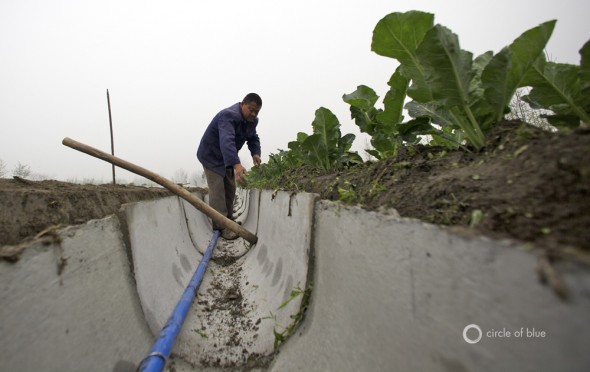
The irrigation districts assert that the construction saved 58 million cubic meters (15 billion gallons) of water last year. By 2015, irrigation districts plan to spend $US 59 million (395 million RMB) annually on modernization and canal lining to save 90 million cubic meters (23.7 billion gallons) annually. The water saved is being transferred from agriculture to Ningxia’s growing industrial base—much of it focused on coal production, power generation, and coal-to-chemical conversion. (See sidebar.)
Kou Guojiang, the chairman of the Nan Liang Water User Association, shrugged when asked about the water transfer occurring in his irrigation district.
“We learn to produce more with less water,” he said. “That’s what we’re doing.”
Map and graphics by Stephanie Stamm, Justin Manning, Stephanie Meredith, and Kate Roesch, undergraduate students at Ball State University. Photos by J. Carl Ganter, a Traverse City-based photojournalist and director of Circle of Blue.
Contributions by Jennifer Turner, Washington, D.C.-based director of the China Environment Forum at the Woodrow Wilson International Center for Scholars.
Circle of Blue’s senior editor and chief correspondent based in Traverse City, Michigan. He has reported on the contest for energy, food, and water in the era of climate change from six continents. Contact
Keith Schneider

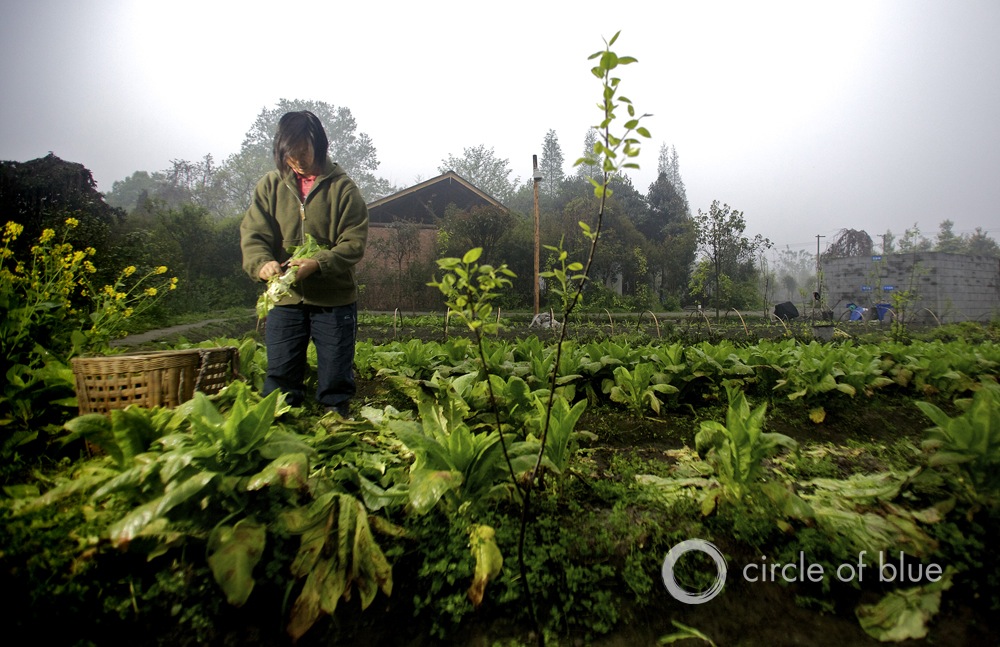
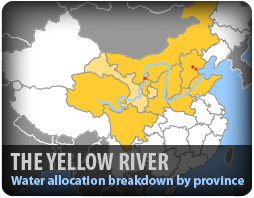


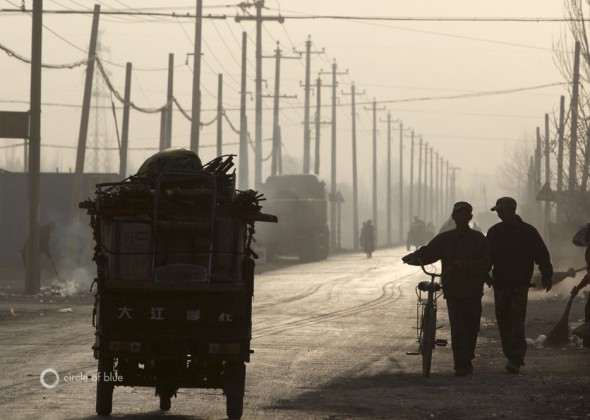



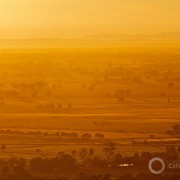


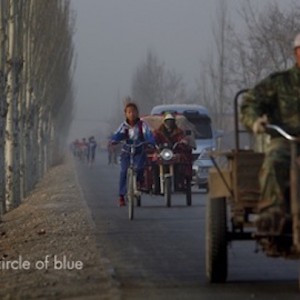
Irrigation systems developed much earlier than 200BC — more like 1500-2000 BC in Mesopotamia and on the Indus River. Important for a water site to convey the historic depth of our engineering the environment. The management of the systems contributed then to the rise of a bureaucracy and leisure class enabled by increased productivity, which then led to the first Eurasian civilizations. the German researchers Karl Witfogel and Wolfram Eberhard traced this water management basis for the rise of civilizations.